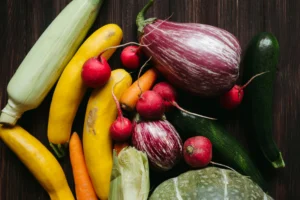20 Aug Summer Spoils
Summer Spoils
Summer heat can be difficult on restaurant and food service businesses to keep products fresh and safe. Heat will cause foods in storage to break down faster, erupting the appearance or flavor. This is especially seen in foods such as potatoes, asparagus, hummus, and parsley – all of which can go “bad” in a matter of days or even hours, if not properly stored. Due to failure to properly store food in a drastic change of climate, such as a heat wave, the percentage of food waste increases in the summer months.
Donate.
In fact, According to the National Restaurant Association, the U.S. Department of Agriculture estimates food waste in the United States to be about 30-40% of the food supply.
One solution to food waste is to donate the food. According to a 2014 survey conducted by the Food Waste Reduction Alliance, 56% of large restaurants said concerns about liability kept them from donating food. However, this legal hurdle is a misconception. Passed in 1996, the Bill Emerson Good Samaritan Food Donation Act protects restaurants from civil and criminal liability should a recipient get ill or hurt as a result of consumed donated food. Food that has already been served cannot be donated, however restaurants can encourage their customers to accept a take-away box.
Provided below is a list of some popular restaurants that have already adopted a policy to donate any left over, safe foods to organizations that feed the hungry and in need:
Panera, Pret A Manger, Starbucks, Olive Garden, Longhorn Steakhouse, The Capital Grille, Yard House, Pizza Hut, KFC, Taco Bell, Chipotle Mexican Grill, McDonalds, Chick Fil A, Zambrero, Bahama Breeze, Seasons 52, The Cheesecake Factory, NPC International, Red Lobster, Grand Lux Café, Famous Dave’s, Auntie Anne’s, Cracker Barrel, Einstein Bros Bagels, Wawa, Outback Steakhouse, Bonefish Grill, and Fleming’s Prime Steakhouse, as well as several other major restaurant chains currently in the development stage of forming Harvest Programs.
Farm-to-Fork.
In addition to donating excess foods, the “Farm-to-Fork” movement was created to eliminate excess food waste. Many people assume the “Farm-to-Fork” movement is in regards to campaigning for more organic foods rather than frozen or even processed foods. However, the Farm-to-Fork movement is much more. It is often described as a “Food Waste Solution.” Produce is lost in fields, warehouses, packing, and distribution and is then wasted before it even makes it into a restaurant, supermarket, or fridge at home.
“I would say at times there is 25% of the crop that is just thrown away or fed to cattle. “Sometimes it can be worse,” said Wayde Kirschenman in an article posted by Suzanne Goldenberg in “The Guardian.” Kirschenman’s family has been growing potatoes and other vegetables near Bakersfield, California, since the 1930s.
Some experts believe this is due to America’s need for perfections. If a “sunburnt” or darker hued vegetable was harvested, those do not sell, therefore farmers end up ploughing right over them. Table grapes that do not conform to the appetizing wedge shape are never bought, therefore harvesters dump them. Due to this fact, Imperfect Produce, a subscription delivery service for “ugly” food in the San Francisco Bay area, estimates that about one-fifth of all fruit and vegetables are consigned to the dump because they do not conform to the industry standard of perfection.
The demand for “perfect” fruit and vegetables means much is discarded, damaging the climate and leaving people hungry.
The NRA’s goal is to help restaurants reduce the amount of food waste by increasing the donations of safe, nutritious food and recycling or composting appropriate foods to divert it from landfills.
Compost.
Even more than composting, is the reality of anaerobic digestion, and the affect this process can have on the environment. Anaerobic digestion is a process of harnessing methane gas to create energy. Similar to waste-to-energy plants, anaerobic digestion is an excellent use of food waste to create another resource to power a building’s heating or cooling system. This energy can be turned into electricity so while American has much waste, businesses might as well turn it into something beneficial for the environment and culture.
More with 123ce



